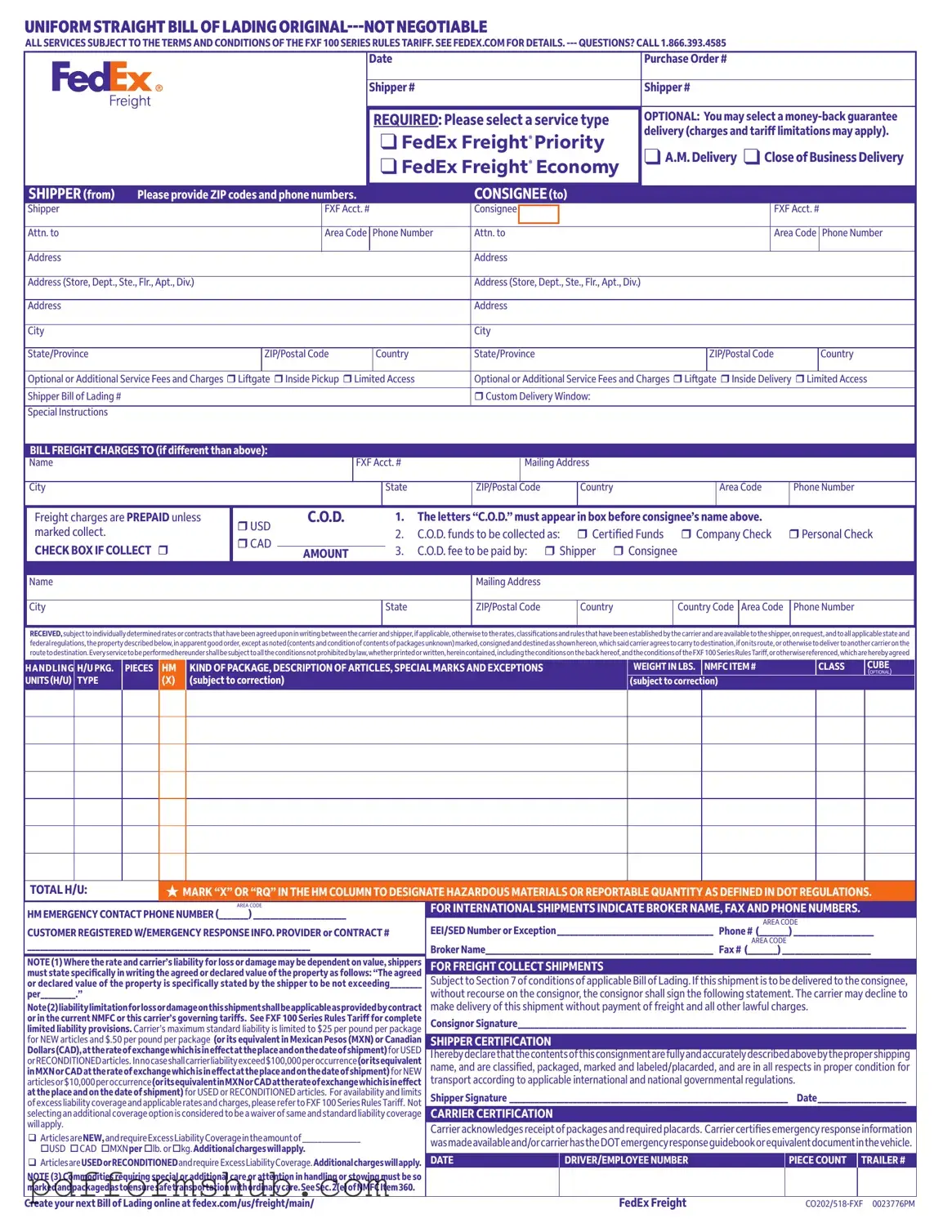The FedEx Bill of Lading form serves as a crucial document in the shipping process, detailing essential information about the shipment and the parties involved. This form includes sections for both the shipper and consignee, requiring specific details such as names, addresses, and contact numbers. It also outlines the service type selected, whether it be FedEx Freight Priority or Economy, and allows for optional services like liftgate or inside delivery. The form emphasizes the importance of accurate descriptions of the goods being shipped, including weight and hazardous materials identification, ensuring compliance with safety regulations. Furthermore, it addresses payment terms, including whether freight charges are prepaid or if a C.O.D. option is chosen. The Bill of Lading incorporates legal disclaimers regarding liability and conditions, highlighting the need for shippers to declare the value of their goods and understand the limitations of carrier liability. By providing a comprehensive overview of the shipment, the FedEx Bill of Lading not only facilitates the transportation of goods but also protects the interests of all parties involved.
